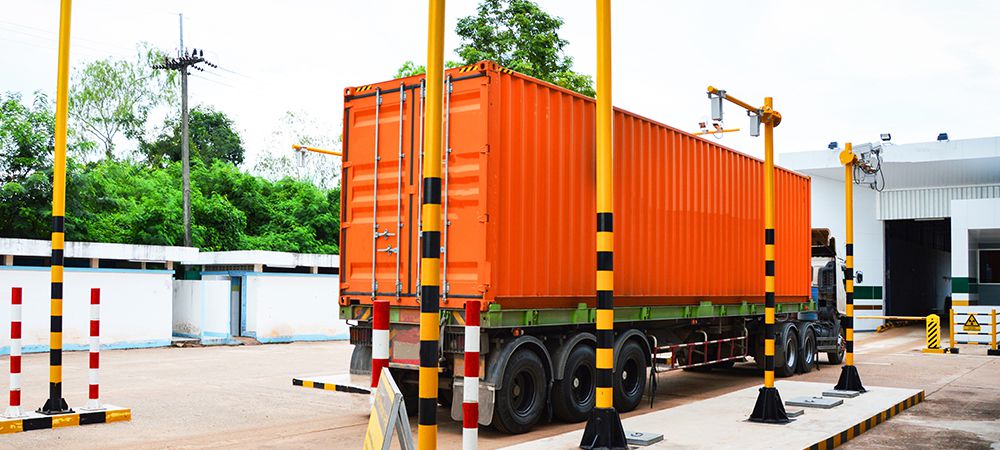Cross border shipping between Canada and the United States is not typically as difficult as shipping across the globe. However, there are still certain protocols and other considerations shippers should be aware of beyond what is needed for domestic shipping. This includes making sure you have proper documentation, information about customs, and how to estimate shipping time for your customers, clients, and business partners.
Here we will look at everything you need to know about cross border shipping with a focus on shipping between the United States and Canada. Read on to find out why it is so important to offer both cross border and global shipping options for your company.
How Will My Shipment Clear the Border?
Whether shipping to Canada or the United States, most less than truckload (LTL) shipments will pass through a kind of pre-approval system. In Canada this is called the Pre-Arrival Review System (PARS) while the United States has the Pre-Arrival Processing System (PAPS).
Both PARS and PAPS serve as a way for shipments to get over the border more quickly by allowing customs agents to review documentation before items arrive at the border. PARS, in particular, has several benefits that makes shipping cross-border easier. For one, everything is done digitally which reduces time filing physical paperwork.
Note: While passing PARS or PAPS can expedite the process of delivering your shipment over the border, it is not a guarantee that it will not be flagged for further inspection. There are a wide range of reasons that your items may need to be physically inspected including routine checks or potential discrepancies in the digital filing. To reduce this risk, it is important to ensure you have all documentation filed accurately and on time.
What Factors Affect Cross-Border Shipping Costs?
Though cross-border shipping has become more widespread and affordable, there are factors that will affect costs. Most of these factors are the same as what would affect domestic shipping.
When managing shipping costs, you can expect the following to affect costs:
- Weight of the shipment: Each mode of transportation has certain weight limits. Even if your shipment is relatively compact, if it weighs a great deal, it will cost more. This is considered the “chargeable weight”. When calculating this, the actual weight and the dimensions of the shipment are taken into consideration.
- Density of Shipment: The more closely packed your items are, the lower cost of shipping per unit you can expect.
- Distance the Shipment Travels: Additional costs for distance are to cover fuel.
- Tariffs and Classifications: All items will have some kind fees associated when shipping cross-border but some will have additional costs. This includes some food items, alcohol, tobacco, and more. It is important to check the taxes for individual products before shipping or this can be an unpleasant surprise bill as the small amounts per item add up.

What Documents are Needed for Cross Border Shipping?
Bill of Lading: As with any shipment, one of the most important pieces of paperwork is the Bill of Lading. This document serves as a receipt generated by the carrier when they receive a shipment.
Used by carriers, shippers, and brokers, the BOL keeps a detailed record of what was shipped, when, and where. Often consulted when there is a dispute over missing or damaged items, the BOL is important for both the person or company shipping the items and the carrier of those items.
ACE and ACI: Known as Advance Commercial Information (ACI) in Canada, and Advance Commercial Environment in the United States (ACE), these forms are a way to document and record all commercial cargo entering each country.
The ACI requires all commercial cargo to be registered with the Canada Border Services Agency before reaching the border. ACE allows both U.S. Customs and other government agencies to review shipments, in particular, ones that pose a greater risk compared to general goods. Both the ACI and ACE aim to make cross-border shipping more efficient while also making it safer.
Getting Through the Border FAST: Free and Secure Trade (FAST) certification is a special classification for commercial shipping vehicles going to and from Canada and the United States. Carriers who meet the requirements enjoy several benefits that allow them to cross the border more quickly including faster customs clearance and use of special lanes at the border.
Here are some other important documents that are required for cross border shipping:
- Contract of Sale
- Certificate of Origin, NAFTA
- List Detailing Items
- Invoice, Proforma
- Declaration for Customs
- Policy of Insurance
- Automated Export System Filing
How Long Does Shipping Take from Canada to the United States?
While there is additional paperwork and other considerations involved with shipping across the Canada and U.S. border, the actual travel time is not much different from shipping within either country. Therefore, you can expect shipments to take around 1 to 4 days which is about how long most shipments take within the U.S. and Canada.
Generally, distances under 1000 miles will take 1 to 3 days. Sending a package more than 1000 miles will typically take one to two days more than that, or around 4 to 5 business days.
Why Should You Offer Cross Border Shipping?
Whether you are shipping across the border to Canada or the United States, or if you are shipping to the other side of the globe, having international shipping options will greatly expand your customer base. Here are other reason to expand your cross border and international shipping capabilities:
- Demand is Growing: As our global economy grows, there is greater and greater demand for products all around the world. Getting started now with one or a few countries can set you up for success as this trend grows.
- Grow and Retain Customers: International shipping options are becoming the standard, not the exception. Failing to update your company’s shipping policies means customers will likely just go to a competitor if shipping is not available.
- It’s More Lucrative than You Might Think: On average, international customers will spend nearly 20% more on each transaction. This likely happens because international customers will need to spend more on shipping and wait longer for their items. Wanting to make the wait and the cost worth it, they tend to order more.
- International Shipping Logistics are Getting Easier: Not too long ago, international shipping was seen as prohibitively expensive and there weren’t many options for carriers either. Now, that is all changing.
Enjoy Fast Cross-Border Shipping with RoadLINX
When it comes to cross-border shipping, you need an experienced carrier who understands the necessary logistics and special concerns involved. At RoadLINX, our dedicated team of logistics experts and drivers work to ensure the fastest, safest, and most efficient cross-border shipping. We deal extensively with both the United States and Canadian borders as well as domestic shipping within each country to give you the best cross-border shipping options possible.
Get a free estimate on your cross-border shipping by calling the RoadLINX team at 905-760-1141.

Leave a Reply